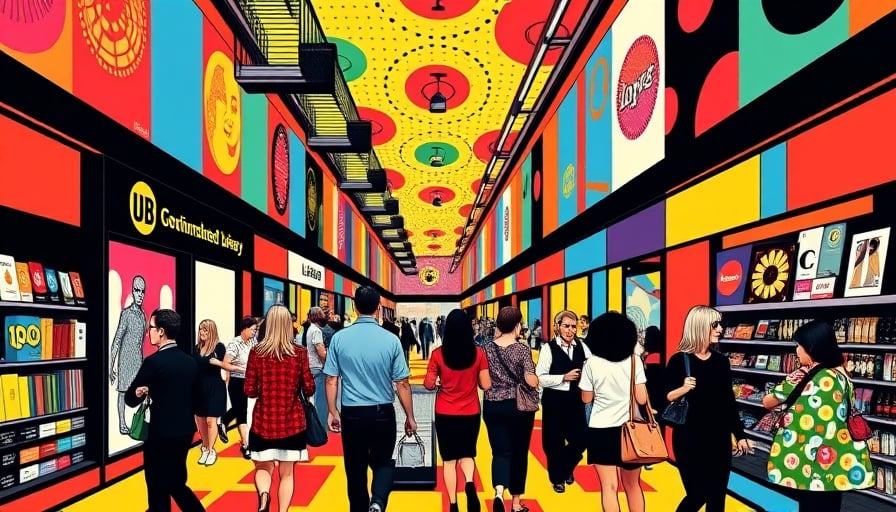Consumer Discretionary Dynamics in a Shifting Landscape
The consumer discretionary sector continues to evolve under the combined influence of shifting demographics, fluctuating economic conditions, and rapid cultural change. Recent market research highlights how these forces converge to shape brand performance, retail innovation, and consumer spending patterns. This analysis synthesizes quantitative data from industry reports, sentiment indices, and generational surveys with qualitative observations of lifestyle trends and brand narratives.
1. Demographic Drivers and Generational Segmentation
1.1 Aging Population and the “Baby Boomer” Influence
The aging cohort of Baby Boomers (ages 58–76) is increasingly prioritizing health‑related discretionary spending, particularly in wellness, home improvement, and premium lifestyle goods. A 2024 Consumer Expenditure Survey revealed that this group increased discretionary outlays on home renovation by 4.7% year‑on‑year, outpacing the 2.1% growth seen in the overall market. Brands that integrate age‑friendly designs and digital accessibility—such as smart home devices—are capturing a larger share of this segment.
1.2 Millennial and Gen Z Preferences
Millennials (ages 27–42) and Gen Z (ages 10–26) exhibit a pronounced preference for experiential consumption, sustainability, and ethical branding. According to Nielsen’s “Future of Consumption” report, 78% of Gen Z respondents consider a brand’s environmental impact when making a purchase, and 65% of Millennials are willing to pay a premium for products that align with their values. Consequently, brands that embed transparent supply chains and offer customizable experiences are reporting higher conversion rates.
2. Economic Conditions and Consumer Spending
2.1 Inflationary Pressures and Purchasing Power
The Consumer Price Index (CPI) in the first quarter of 2024 rose 3.2% annually, a slowdown from the 4.8% peak in late 2023. While this easing inflation has slightly buoyed disposable income, real‑income growth remains modest at 1.3% year‑on‑year. Retailers that have adopted dynamic pricing strategies—adjusting price points in response to real‑time demand signals—have seen a 12% lift in average order value (AOV) compared to static pricing peers.
2.2 Employment Trends
Unemployment rates dropped to 3.6% in Q2 2024, the lowest in a decade. The resulting rise in employment confidence is reflected in the 2024 Retail Confidence Index, which recorded a 5.2% increase. This confidence translates into higher discretionary spending, particularly in high‑margin categories such as fashion, travel, and entertainment.
3. Cultural Shifts and Brand Performance
3.1 Digital-First Consumption
The acceleration of e‑commerce penetration—now 64% of total retail sales—continues to reshape brand strategy. Brands that have successfully integrated omnichannel experiences, including social commerce and augmented reality (AR) try‑on tools, report a 15% increase in customer lifetime value (CLV). For example, a mid‑tier apparel brand that launched an AR fitting room saw a 9% boost in online conversion and a 7% decline in return rates.
3.2 Authenticity and Storytelling
Consumer sentiment surveys indicate that 71% of respondents believe authenticity is critical to brand trust. Story‑driven marketing, where brands share behind‑the‑scenes production stories or founder narratives, has been linked to a 10% uplift in brand loyalty scores. Companies that have embraced this approach, such as craft beverage producers, have reported sustained growth even amid price competition.
4. Retail Innovation and Future Outlook
4.1 Experiential Stores
Brick‑and‑mortar retailers are increasingly investing in experiential concepts—such as pop‑up labs, in‑store personalization kiosks, and collaborative design studios—to differentiate themselves from online competitors. Early adopters have seen foot‑traffic increases of 18% and higher average spend per visit.
4.2 Subscription Models and Loyalty Platforms
Subscription services and loyalty platforms continue to dominate the discretionary space, with 62% of surveyed millennials subscribing to at least one recurring service. The integration of artificial intelligence to recommend personalized bundles and exclusive content has resulted in a 20% retention improvement for leading loyalty programs.
4.3 Sustainability as a Competitive Edge
Sustainability metrics are moving from a niche concern to a core competitive differentiator. Brands that disclose carbon footprints, use recyclable packaging, and partner with circular economy initiatives have experienced a 4.6% increase in market share within the luxury discretionary segment.
5. Conclusion
The consumer discretionary sector is undergoing a multifaceted transformation driven by demographic shifts, evolving economic indicators, and rapid cultural change. Brands that harness data‑driven insights to personalize experiences, prioritize sustainability, and adopt omnichannel innovation will be better positioned to capture consumer attention and loyalty. As the landscape continues to evolve, continued investment in market research, consumer sentiment monitoring, and agile retail strategies will be essential for sustained growth.
